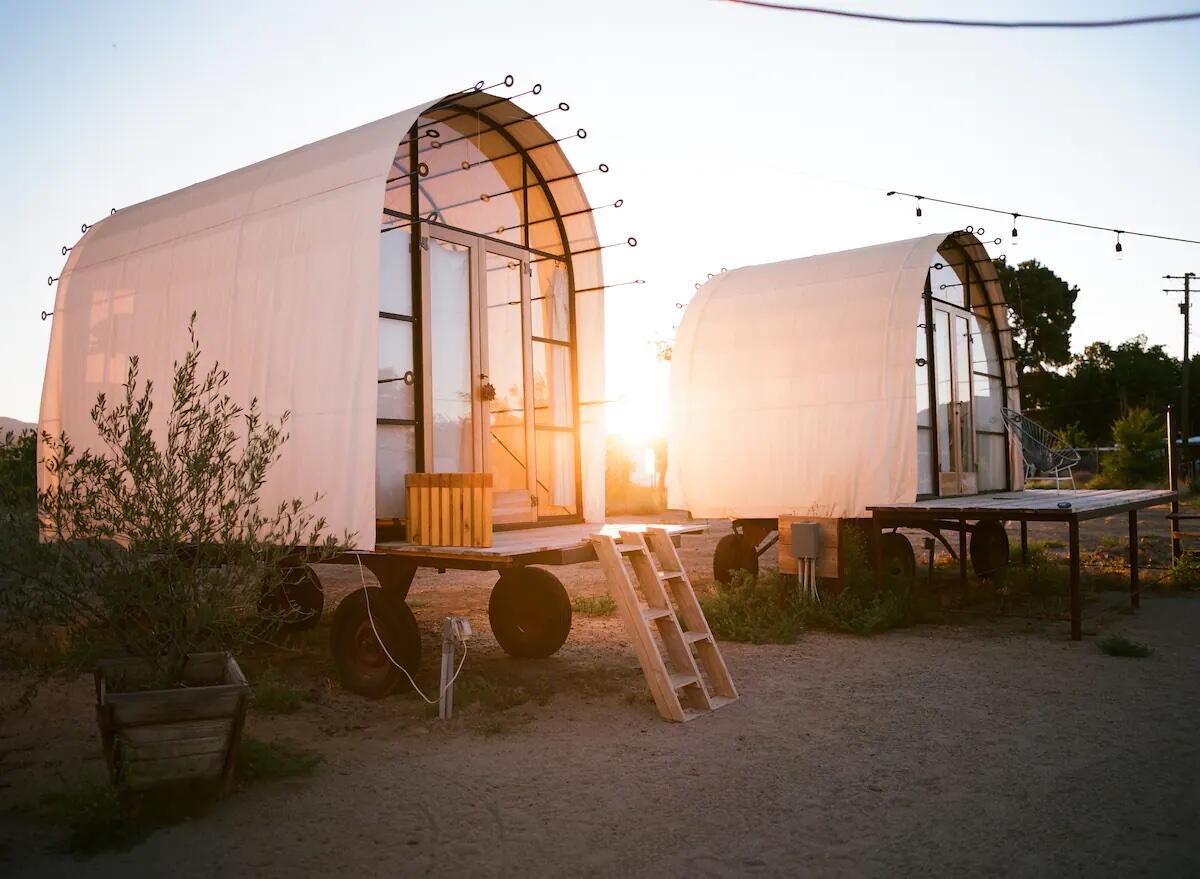
11 things to do in this hidden roadside town bursting with history (and wildflowers)
The superbloom: It’s a Southern California phenomenon that incites glee in the hearts and minds of Angelenos, and frustration in the lives of local officials. In 2019, the last significant superbloom — caused by a high concentration of dormant wildflower seeds finally getting the wet conditions needed to explode into existence all at once — led to traffic jams and parking issues, as well as overwhelmed hiking trails, with visitors often trampling the very flowers they were there to see.
This year, the town of Lake Elsinore in Riverside County, an epicenter of the 2019 poppy superbloom, is shutting off access to popular Walker Canyon trails in order to avoid the “Disneyland-sized crowds” that showed up four years ago. Luckily, there will likely be more than a few places to see superblooms up close. One community embracing its floral abundance is the Cuyama Valley, a corridor of low, rolling hills with rich soil and plenty of sun. And while flower peeping has its charms, there’s so much more in the valley to see and do.
Just a two-hour drive from Los Angeles, the area nicknamed the Hidden Valley of Enchantment lies north of the Sierra Madre mountain range and Los Padres National Forest. Historically a region for farming and cattle grazing, the valley flipped to oil fields in the 1950s when the Richfield Oil Corp. struck a vein near the tiny town of Cuyama, near the Carrizo Plain. By the 1990s, the oil fields were nearly spent; Richfield had been absorbed into what is now the gas station conglomerate known as ARCO; and farmers and ranchers started reclaiming most of the land again. As you turn off I-5 and head west down Highway 166, you’ll see signs of these worlds coexisting as you pass by rows of citrus orchards, carrot fields, grazing cattle and the occasional lazy oil rig. (There’s another, arguably more scenic, way to get here, but Highway 33 from Ojai to Cuyama was closed at the time of publication; check ahead for reopening.)
As you climb the foothills just past the city of Taft, be on the lookout for the “Welcome to the Cuyama Valley” sign planted firmly up on a bluff. This is where the enchantment begins. Blink at the wrong time and you’ll miss the former boomtown of New Cuyama, the best place to hunker down for your weekend of flower peeping (and more). With a current population of just 550, the town consists of small houses, a park and a school, all built in 1951 to house Richfield’s oil workers and their families; a small airport and a motel were added to accommodate visiting executives. That motel has now been restored as a modern roadside resort called the Cuyama Buckhorn. From bikers to day trippers to locals, all roads lead here.
Whether you’re checking in for a quick escape from the city to explore the Carrizo Plain National Monument or grabbing a bite to eat before hunting down the perfect patch of wildflowers, be sure to take a minute to fully appreciate your surroundings. From wine and mead tastings to hiking in the nearby Sierra Madre mountains to getting to know local olive growers, the Cuyama Valley offers so much more than the superbloom.
Here are 11 things to see and do while you’re in the Hidden Valley of Enchantment.
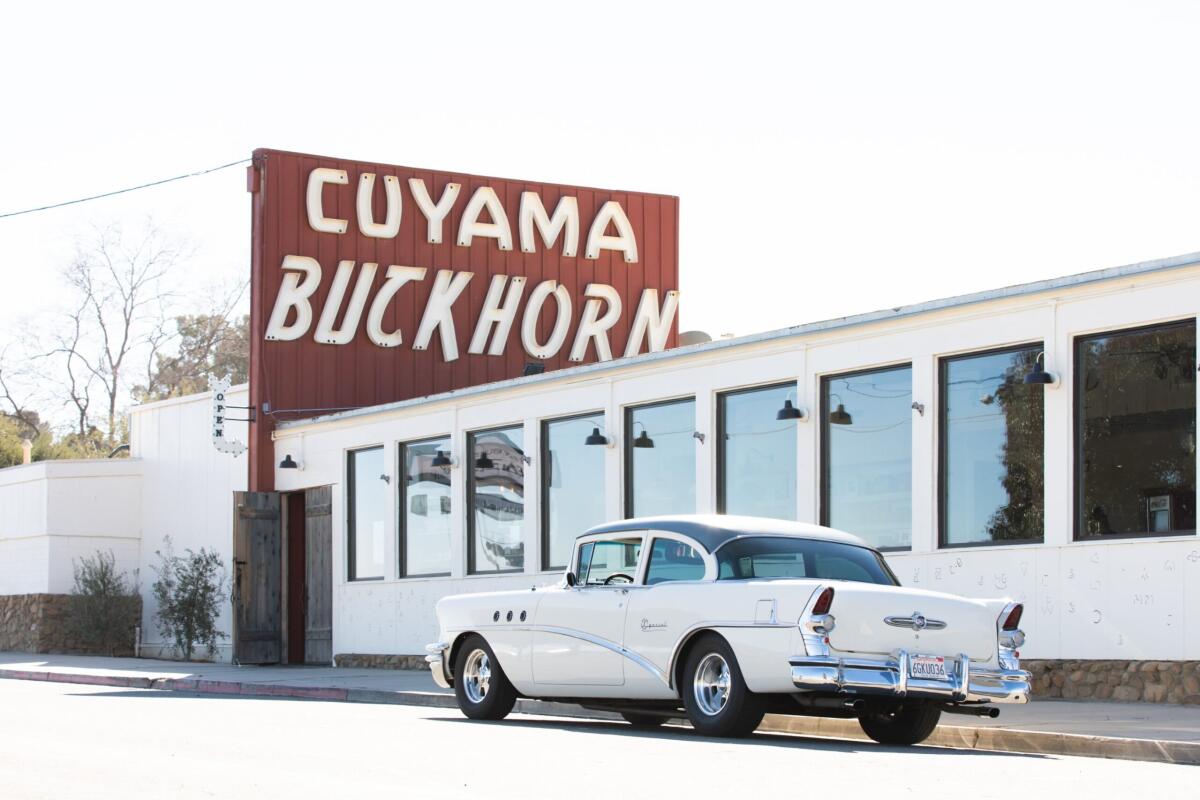
Cuyama Buckhorn
Holding true to its roots as the town’s community center, the hotel hosts a rotating roster of seasonal events, from tasting menus featuring out-of-town chefs to Easter egg hunts. A spring wildflower weekend this year runs from May 5-7 and will celebrate the seasonal bloom with room discounts, specialty drinks and more. Rates start at $199 per night.
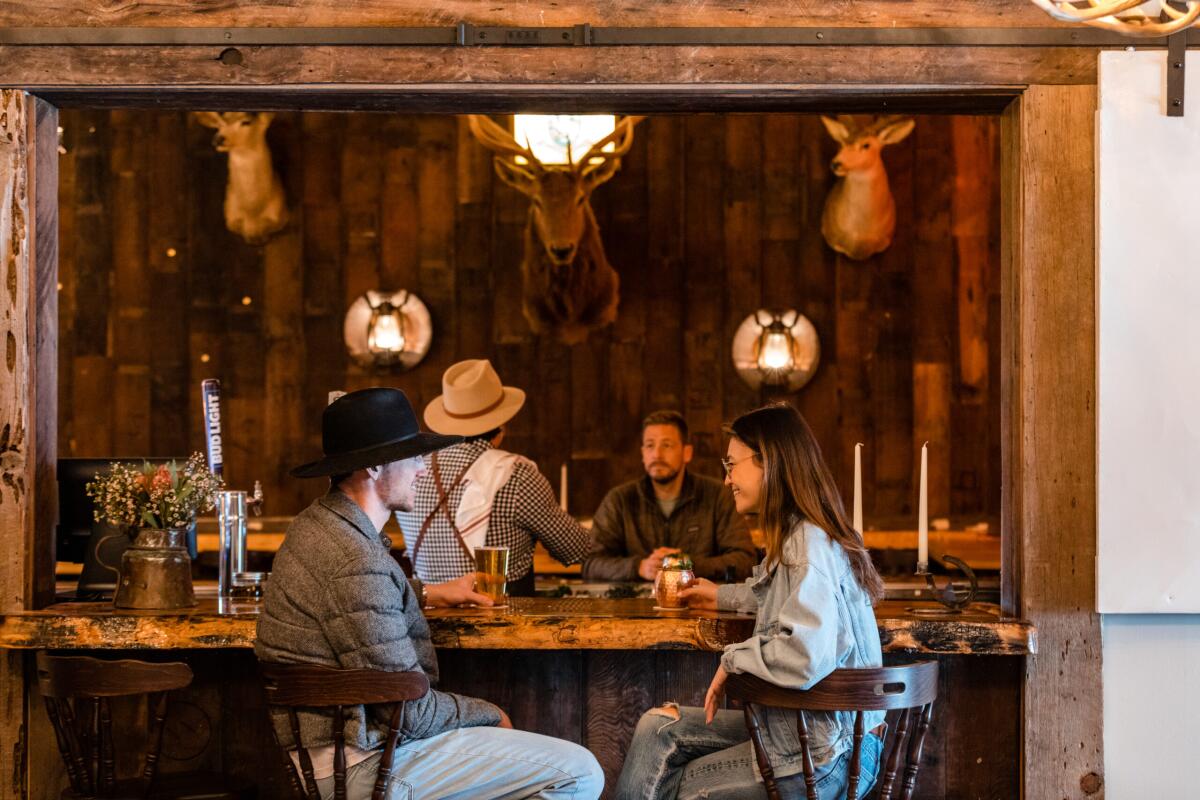
The Buckhorn Restaurant & Bar
Vibe-wise, the restaurant mixes roadside diner and hipster Americana, with a menu that highlights the wealth of the surroundings. A chalkboard covering a wall behind the counter lists local purveyors for everything from beef for burgers to lavender for lattes. The bar’s drink menu rivals that of your favorite big-city bar, with a wall of booze featuring bar staples, as well as special top-shelf liquors that go for $50 a pour. Local touches include a fat-washed dirty vodka martini, where vodka is steeped in olive oil and topped with olives grown just up the road. And for your morning caffeine fix, the Buck Stop coffee shop serves L.A.-based Canyon Coffee and freshly baked pastries.
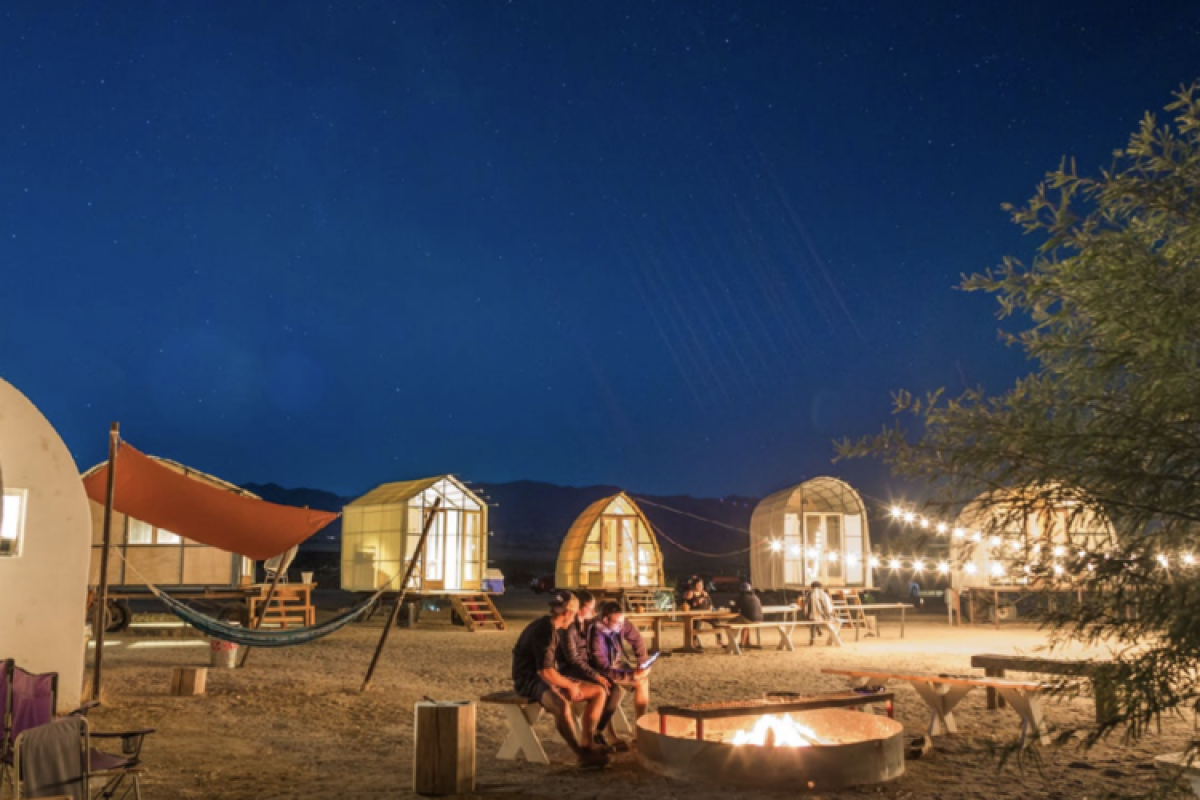
Blue Sky Center
Its biggest effort to date to promote local tourism has resulted in five small glamping huts, designed by architecture firm Shelton Huts, that are available for rent on Airbnb and are perfect for individuals or large groups. Call ahead for tours of the campus and updated workshop hours. Airbnb rates start at $98 per night.
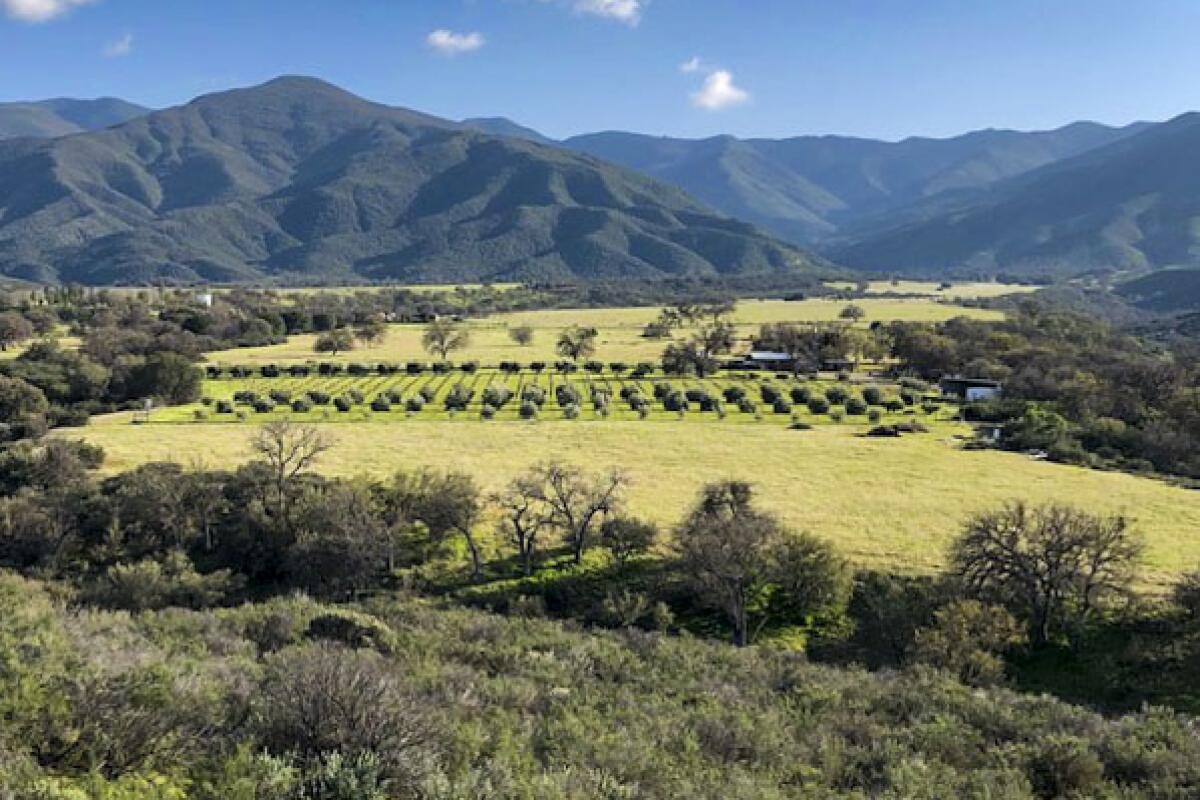
Condor’s Hope
A visit to their certified-organic vineyard will remind you just how special a wine tasting can be. There are no daunting warehouses or ornate tasting rooms. Instead, walk through the vineyard with Gliessman as he explains their farming ethos and enjoy a tasting of estate-grown zinfandel and shiraz led by Jaffe. Hearing them rhapsodize about their respect for the land and listening to its needs kind of makes you think twice about grabbing that prepackaged salad mix at Ralphs.
Call or email ahead for a reservation for a two-hour tasting, $30-$35 per person. Exact directions to the winery, located about 15 miles west of New Cuyama, will be sent after you book a tasting.
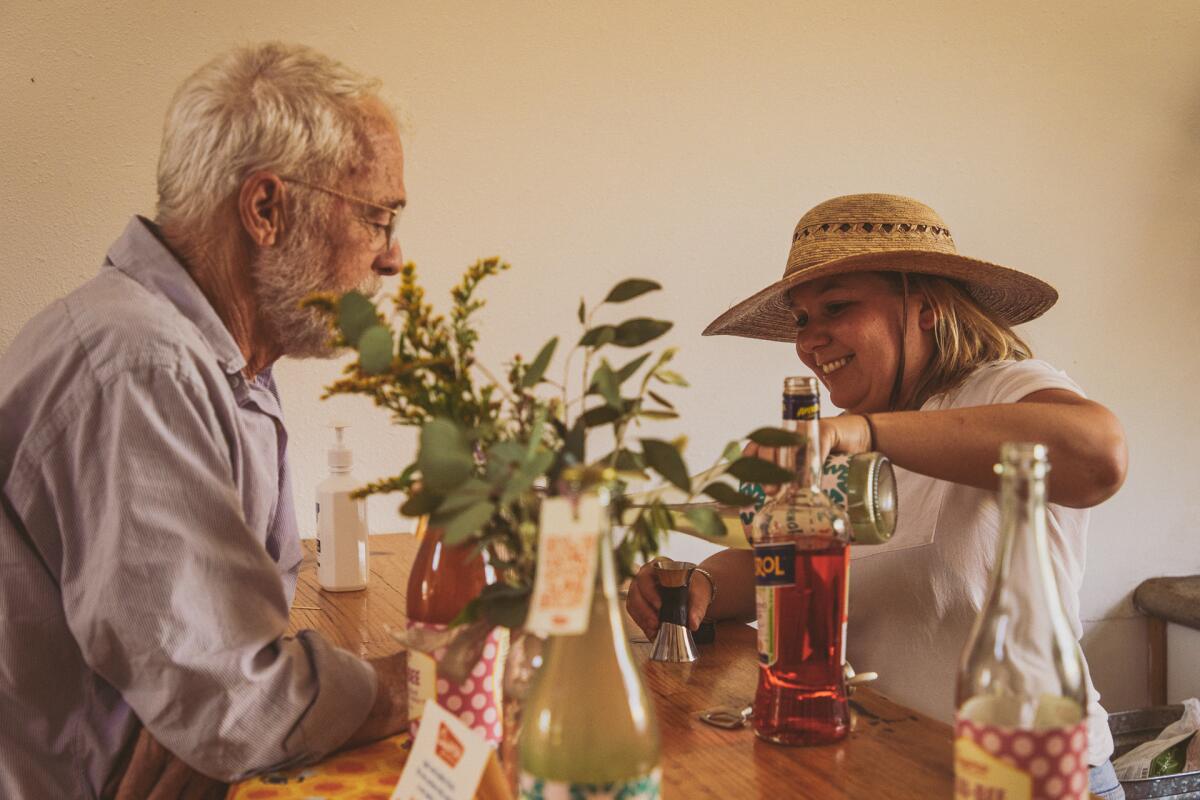
Cuyama Beverage Co.
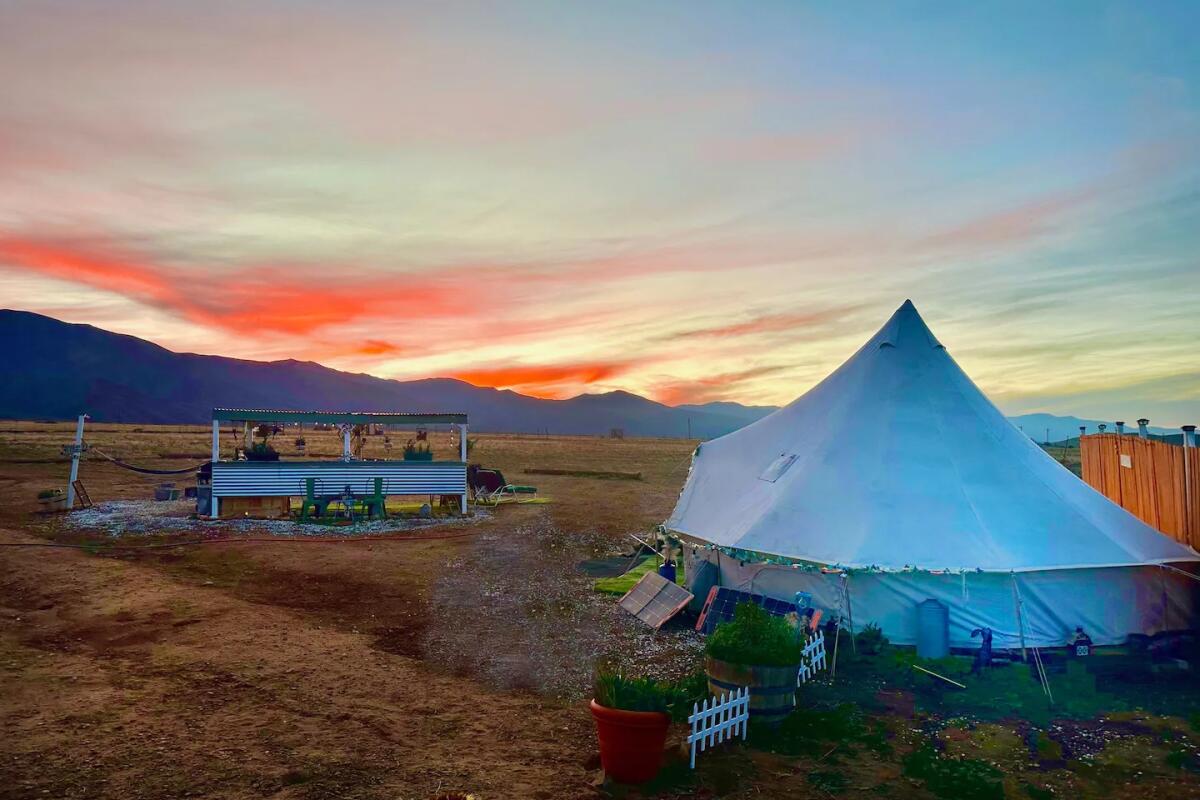
Cuyama Oaks Ranch
Cuyama Oaks caters to multiple needs: It’s part glamping site, with two private yurts available, along with a communal space for eating, playing and even watching movies; and part petting zoo, thanks to the roughly 100 chickens, 20 to 30 goats and 10 pigs that Bremer and Smith raise and sell to other DIY farmers looking to start their own herd. There are also three private camping spaces closer to the wildflowers, if that’s more your speed. But book fast. All their spaces go quickly for the spring/summer. Yurts start at $168 oper night.
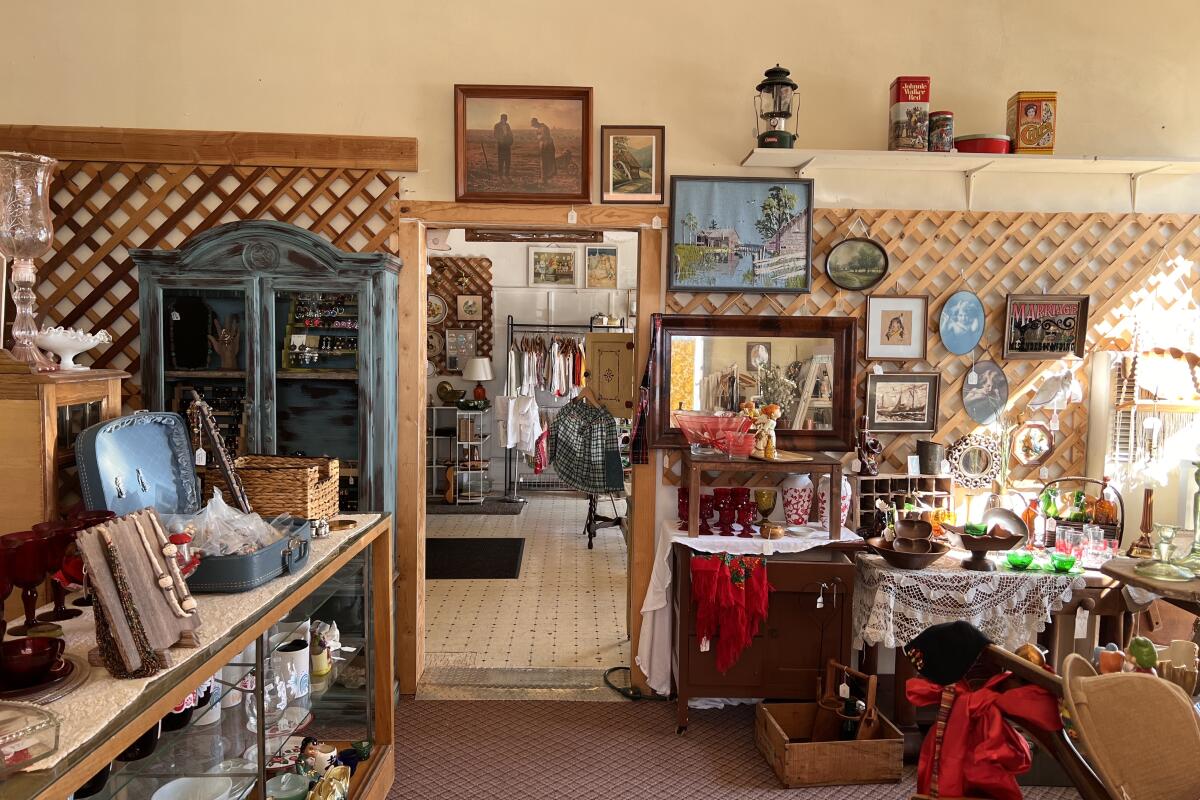
1952 Vintage Finds
Expect shelves filled with vintage glassware from Ohio, ceramics from Indiana and jewelry and clothing sourced from all over. There’s also a great collection of old postcards featuring period shots of the town and valley. Shop hours are 10 a.m.-5 p.m. Saturday and Sunday; weekdays by appointment.
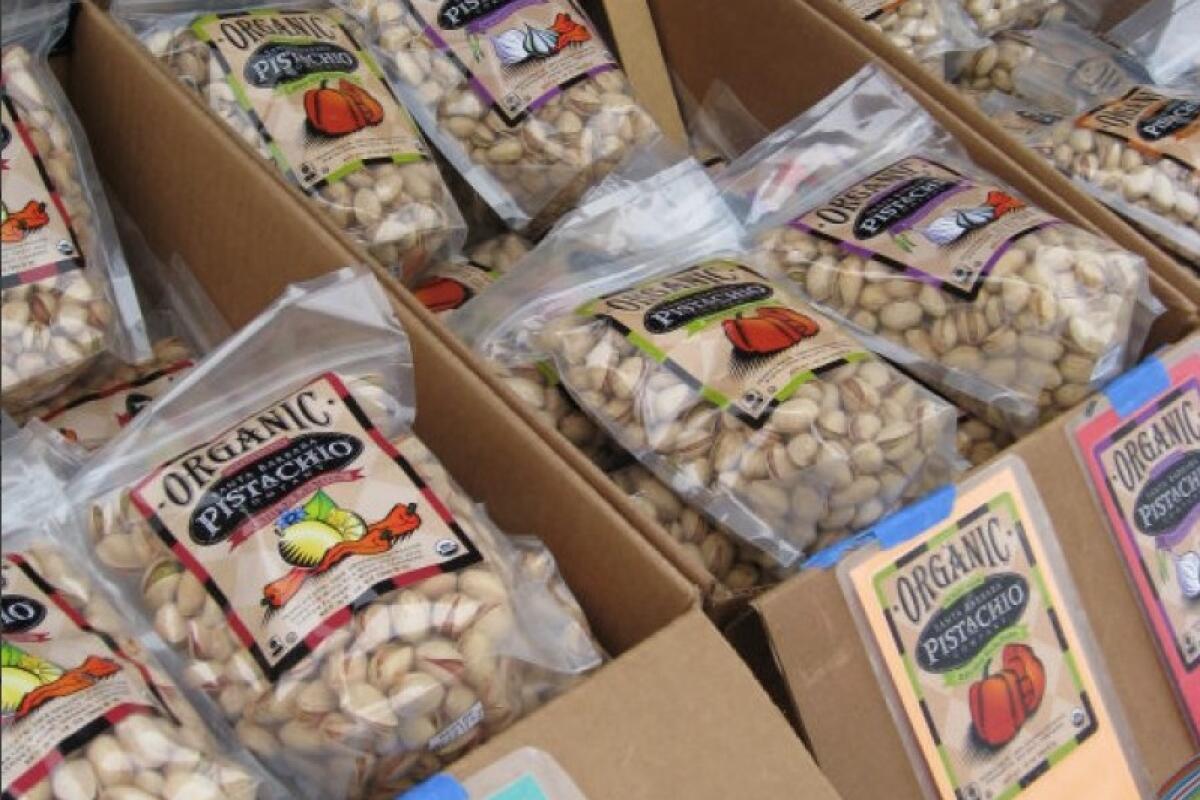
Santa Barbara Pistachio Co.
Pop into the company’s storefront just off Highway 33 toward Ojai and see how the nut is grown, harvested and, thanks to the Zannon family’s flavorful recipes and roasting processes, deliciously brined and roasted with gourmet flavors like chile lemon and hot onion garlic. Store hours are 8 a.m. to 5:30 p.m. daily.
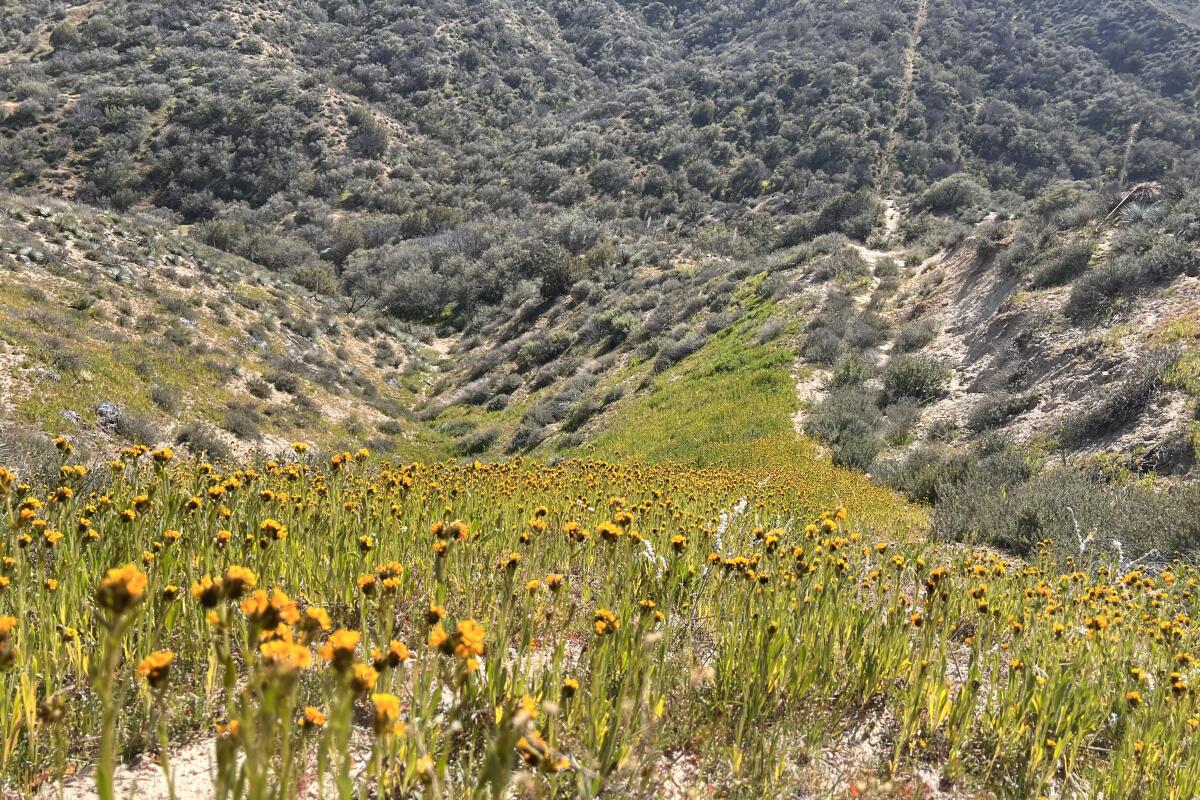
Wildflower hikes
Pull over at a nearby trailhead and wander into the foothills. The Selby Campground Loop Trail is a moderate 4.3-miler that will give you a nice view of the surrounding valley and its floral abundance. And, while a little bit of a drive toward Bakersfield, the aptly named Wildflower Trail is an even easier 0.9-mile loop that will get you up close and personal with some dodecatheon, a.k.a. shooting star.
Directions to Selby Campground Loop Trail: Head west on Highway 166; turn right onto Caliente Mountain Road to Selby Road.
Directions to Wildflower Trail: Head east on Highway 166 for 36 miles; turn right at Gless Ranch; continue for 3 miles.
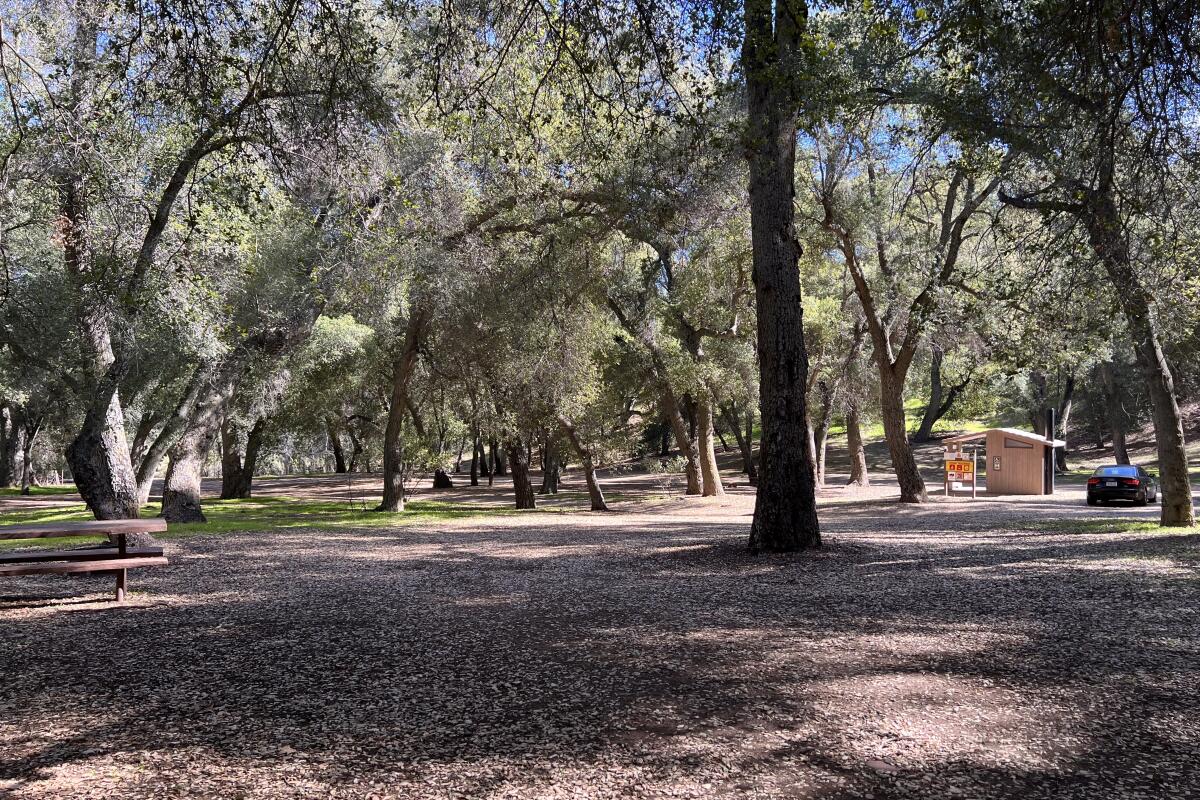
Aliso Park Campground
You’re also at the trailhead for the McPherson Peak Trail, which is a 3.5-mile hike up into the foothills of the Los Padres mountains. An Adventure Pass is required for overnight camping. Local tip: Beware of black bears.
Note: At the time of publication, the campground was closed due to a downed tree blocking access. Call ahead before heading there.
Carrizo Plain National Monument
Look out over the vast terrain and see if you can spot the subtle ridges and ravines that signal the famous San Andreas Fault, which runs through the middle of the monument. Then head to the white alkali shores of Soda Lake, “the largest remaining natural alkali wetland in Southern California and the only closed basin within the coastal mountains,” according to the Bureau of Land Management. At the time of publication, everything is open, but the visitor center advises visitors to look out for soft spots on roads. It’s wise to call ahead before visiting and check conditions, since the rain could compromise or change some of the roads and trails.
Subscriber Exclusive Alert
If you're an L.A. Times subscriber, you can sign up to get alerts about early or entirely exclusive content.
You may occasionally receive promotional content from the Los Angeles Times.



